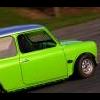
Quick Question On Tach Wiring.
#1

Posted 18 October 2009 - 07:47 PM
#3

Posted 18 October 2009 - 11:41 PM
#4

Posted 18 October 2009 - 11:45 PM
#5

Posted 19 October 2009 - 12:33 AM
#6

Posted 19 October 2009 - 12:56 AM
#7

Posted 19 October 2009 - 08:18 AM
Post up a picture of the rear of the tach and we'll be able to tell which one you have and how to wire it correctly.
#8

Posted 19 October 2009 - 11:24 AM
which implies in his particular case/car, he is not dealing with a PCB
What the late clocks have is a post and a spade for connecting the power and signal, with a thin PCB laid over the back to supply earth and lighting. This is because power and signal for the tacho aren't included in the clock multi connector while earth and lighting are. It's a silly system. People quite often seem to pickup the tacho as a seperate instrument because it is in its own casing simply screwed to the end of the main case. They assume that since it is in a case by itself it works independantly of the main unit but it doesn't.
As Graeme says though, if it is a 1275GT tacho (and not someone simply saying it's 1275GT because that's where they were first used) then it could be the older type. In which case it will obviously have different connections.
#9

Posted 19 October 2009 - 12:07 PM
#10

Posted 19 October 2009 - 01:38 PM
That said, I do have both RVC and RVI examples. I was trying RVC yesterday and, since I don't know condition of the RVI I know I have on hand, probably getting the skinny on the RVC would be best.
What I'm looking for is simplified wiring instuctions so I can hook one up to a loose motor.
So what I have is the motor sitting on a cart, with the battery on the floor. It's already been running, so I'm fairly confident that what I've hooked up so far is correct. I just need to be able to add the tach in so I can properly set the timing.
Picture below is earlier in the day, before I got the dizzy in, the carb and manifolds on, and my temporary wiring loom hooked up.

#11

Posted 19 October 2009 - 03:32 PM
Hopefully that will describe things well enough. I think you'll find where bullet connectors are used, they are for the coil connections while spades are used for power. If you've got a picture of the back of the gauge you'd like to use I'm sure it will be easily sorted.
by the way, the RVC tach will be much easier to work with.
#12

Posted 19 October 2009 - 04:16 PM
So, OK, RVC with a post, spade, and a screw for earth. Which between the post and the spade is for power and which goes to the negative side of the coil?
Edit: Oh, sorry Doug, I didn't see where you said which is which. So bullet for coil and spade for power. We're 100% on that, yes?
Further edit: Linkie for if you want to watch me YouTube vid of the startup. Not really the first startup though, had a few goes before everything was dialed in as close as I could without a tach:
Video
Edited by mwalsh, 19 October 2009 - 04:25 PM.
#13

Posted 19 October 2009 - 04:37 PM
Male spade connector - 12V IGN Source (white wire)
Small Screw below spade connector - Earth (usually via screw into PCB)
Female bullet socket (next to screw) - Connection to coil +ve (white/green wire)
Male bullet (above female) - 12V IGN Source (white wire)

RVC 1275GT Tacho
Male spade connector - 12V IGN Source (white wire)
Small screw nearest male bullet connector (top right in photo) - Earth (usually via screw into PCB)
Male bullet - Connection to coil -ve terminal (usually white/black wire)

For future reference - ignore the wire colour shown in the photo above as it is incorrect!!!!
Edited by GraemeC, 19 October 2009 - 05:33 PM.
#14

Posted 19 October 2009 - 04:52 PM
RVC 1275GT Tacho
Male spade connector - 12V IGN Source (white wire)
Small screw nearest male bullet connector (top right in photo) - Earth (usually via screw into PCB)
Male bullet - Connection to coil -ve terminal (usually white/black wire)
Cheers guys! Just what I needed.
#15

Posted 19 October 2009 - 07:10 PM
0 user(s) are reading this topic
0 members, 0 guests, 0 anonymous users

















